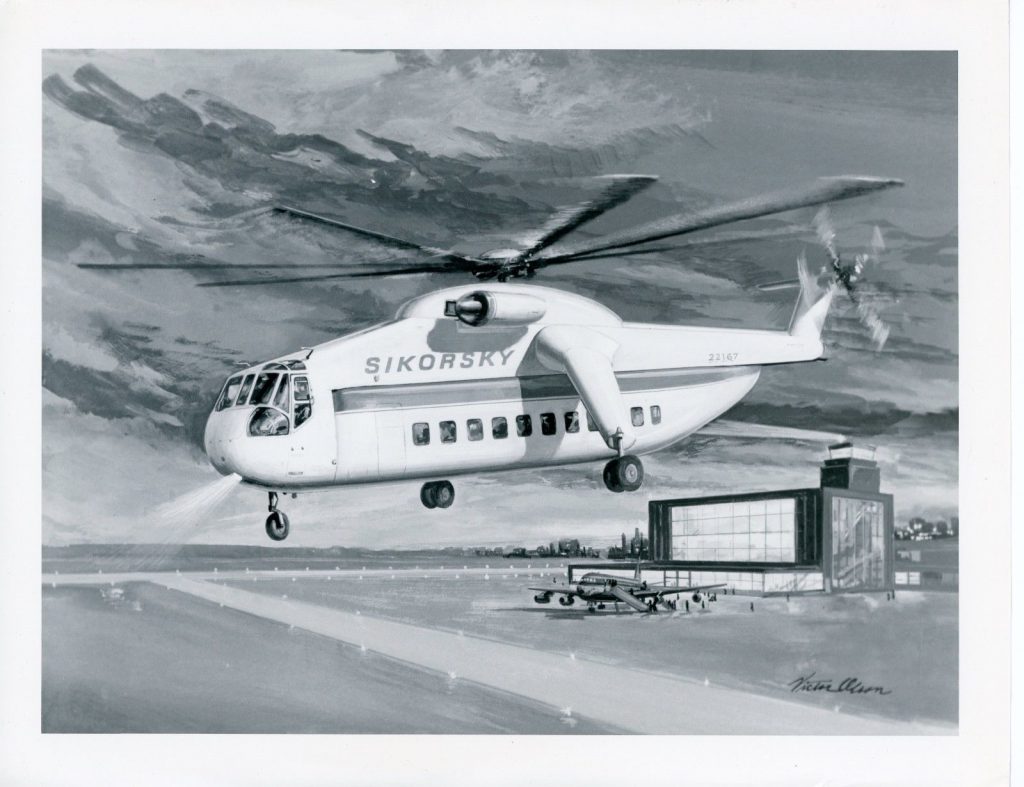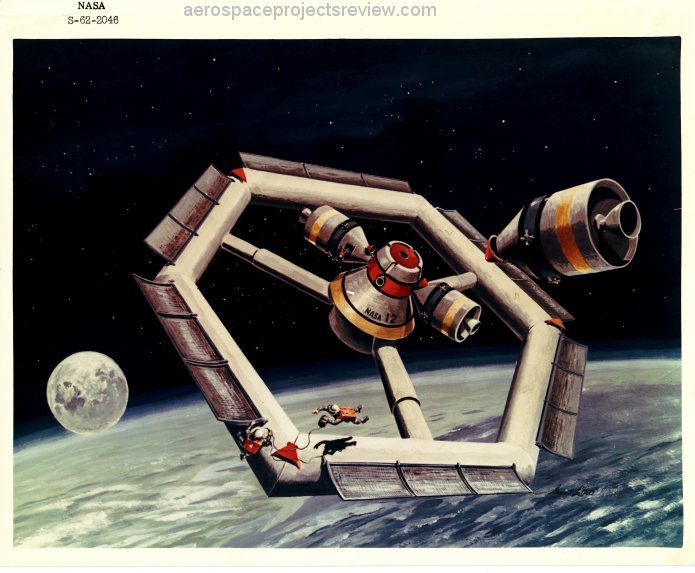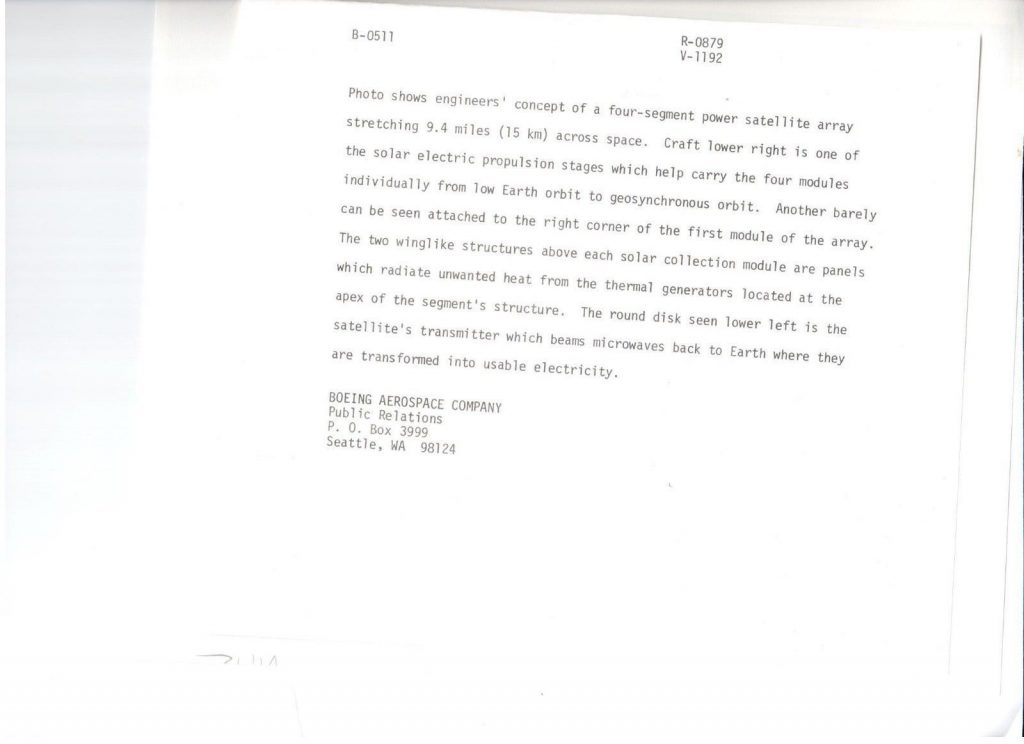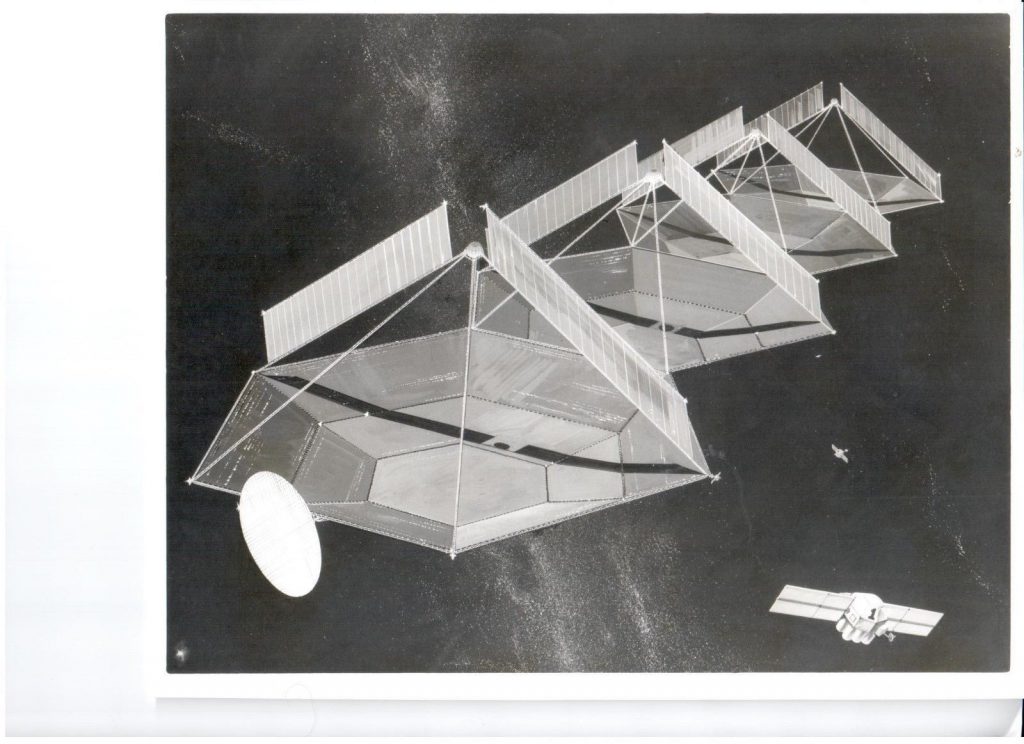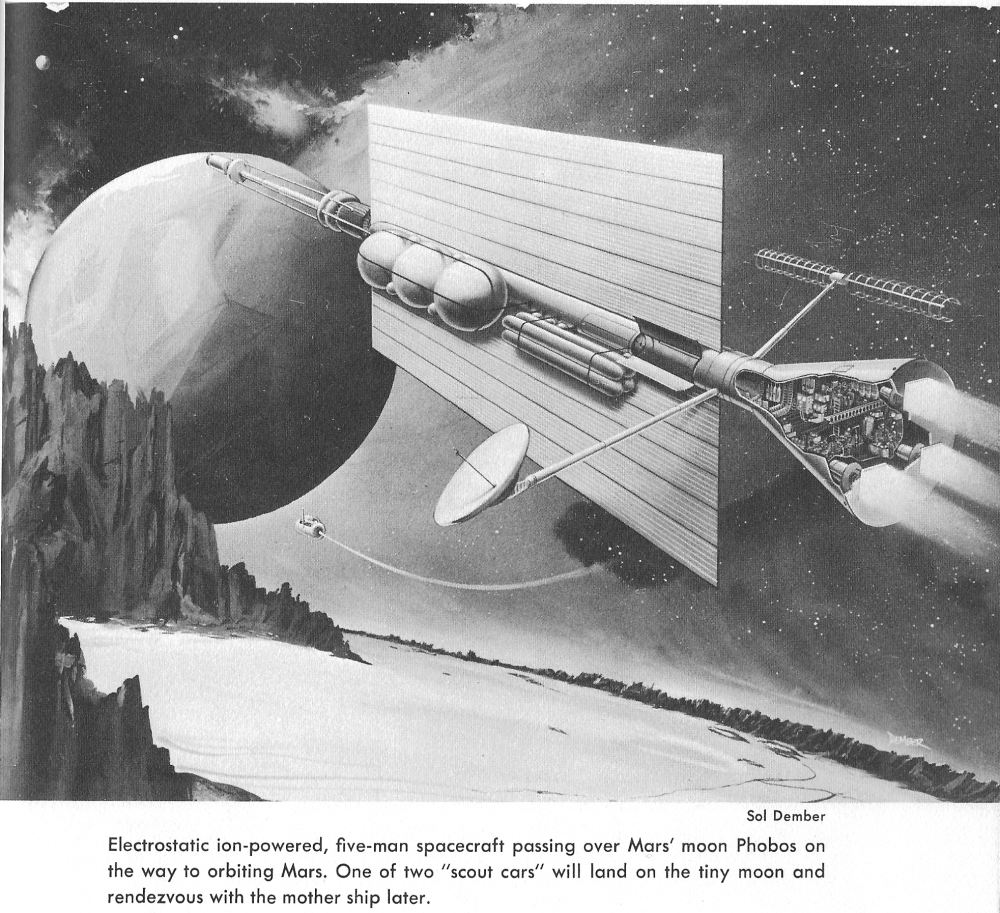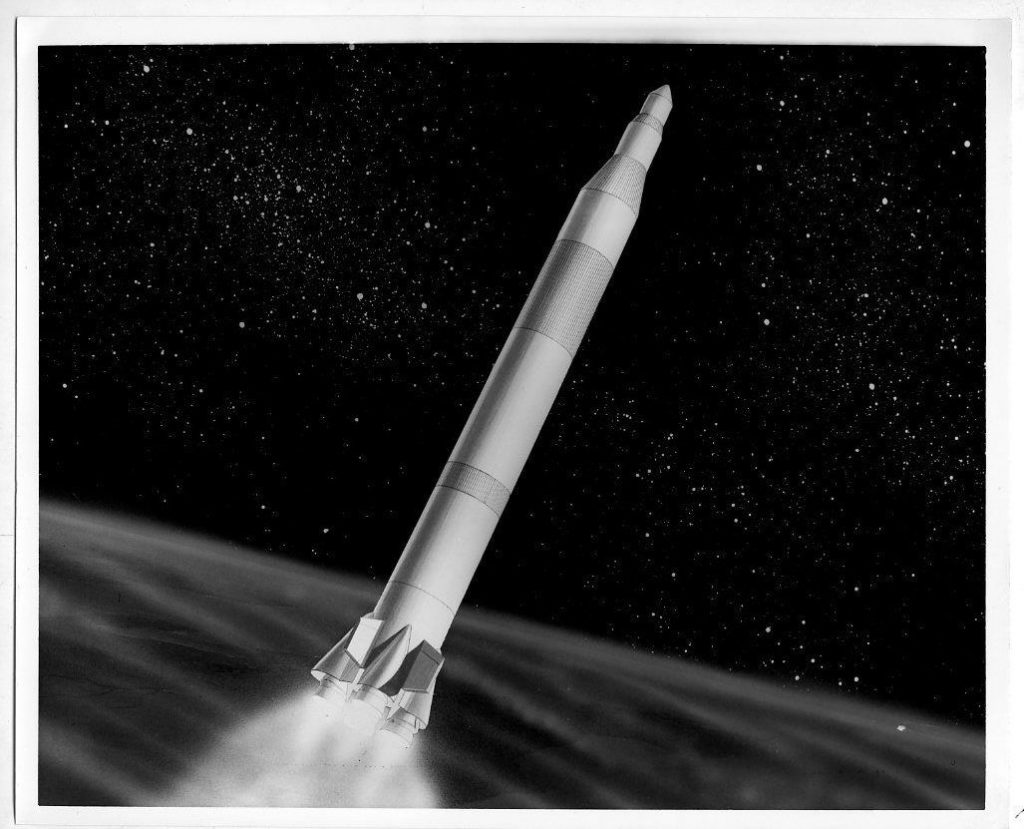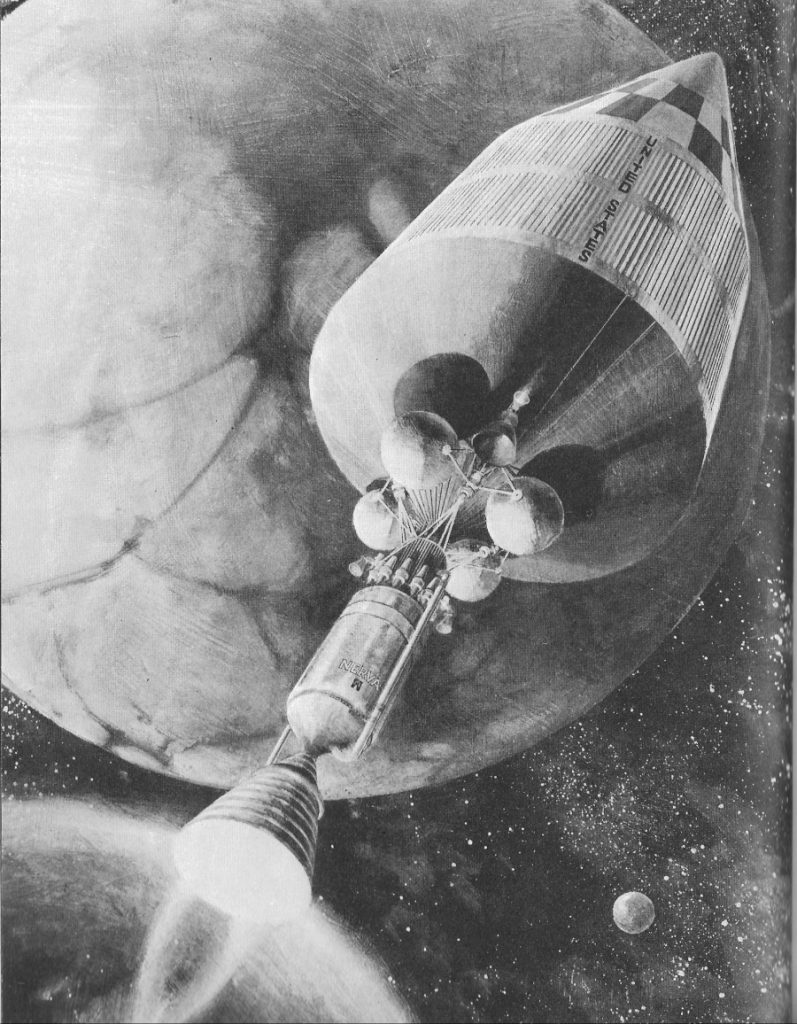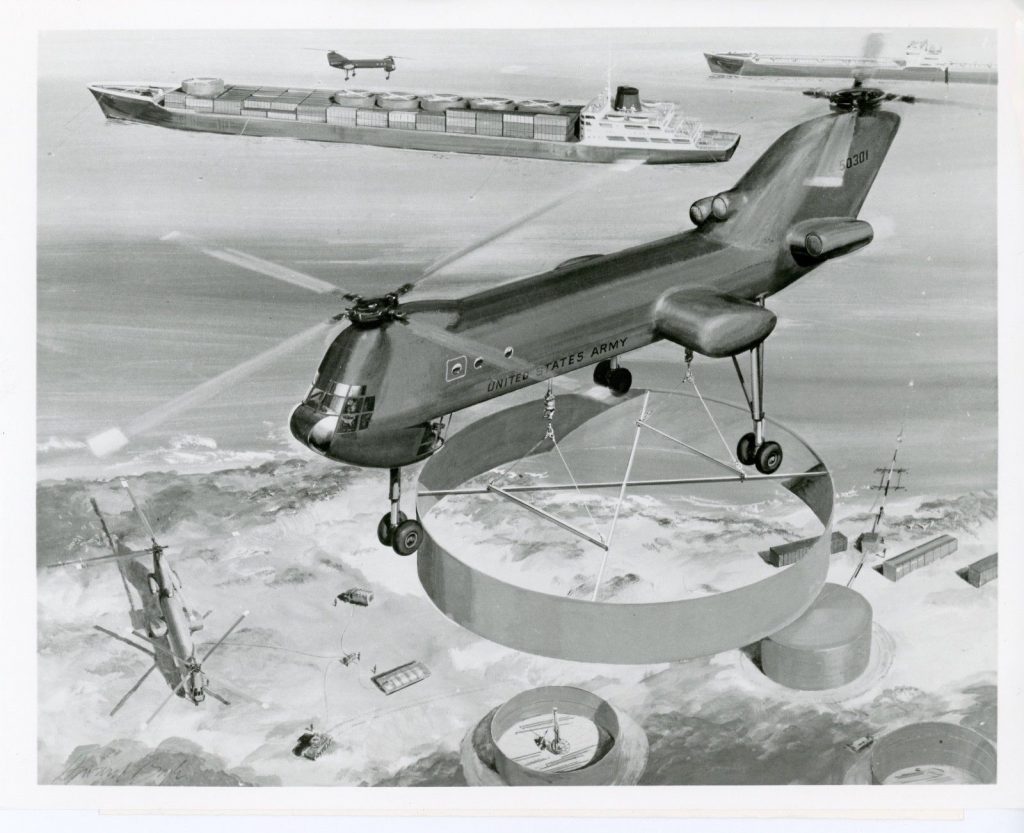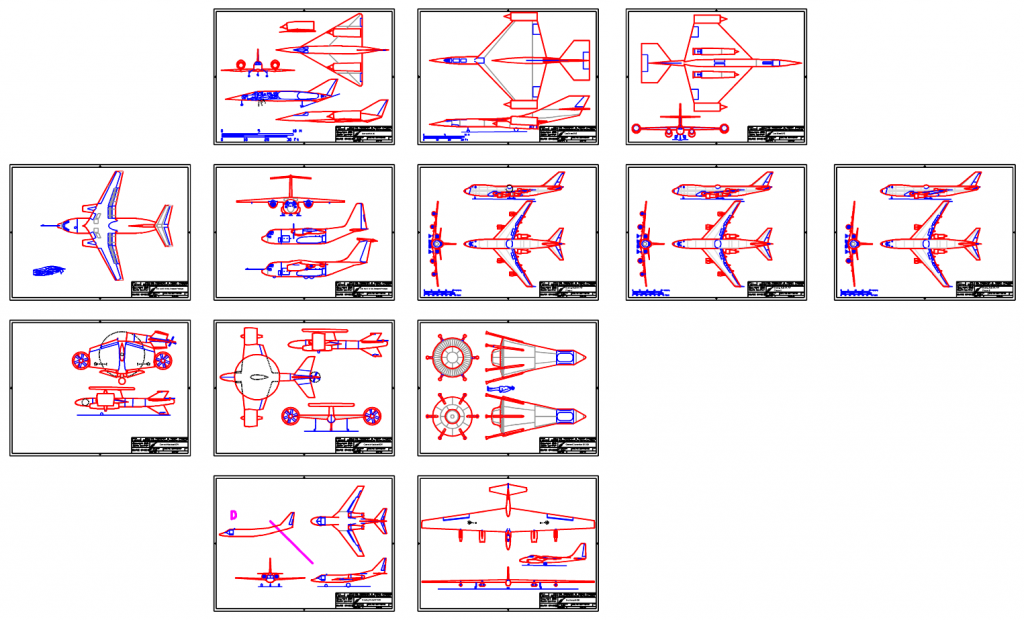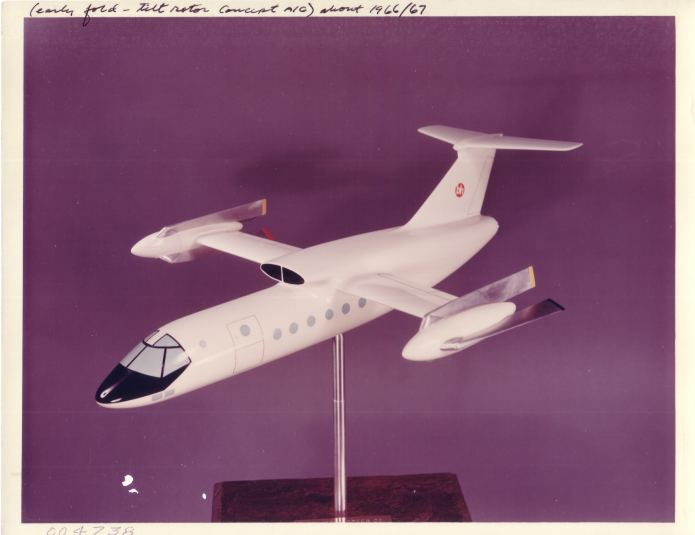From ebay a while back, a B&W PR image of a Sikorsky Skycrane operating as a commercial passenger transport. Sikorsky wanted this to happen in the 60’s, and several attempts to do just this were tried, but it just didn’t really come together. Inter- and Intra-urban commercial passenger helicopters operating as a flying “bus,” often to take people from city centers to nearby airports, were tried but due to cost, noise and safety issues, it never… ah, took off. In contrast, smaller helicopters have done a fair business flying rich folks (and injured folks) round cities, but larger helicopters like this are a thing of the distant past.
An artists concept of a rotating space station circa 1962. It has a NASA ID number but it *may* be North American Aviation, as they designed a space station essentially identical to this, as described and illustrated in an article written by Dennis R. Jenkins for Aerospace Projects Review issue V1N6. This space station was designed to be launched as a single payload atop a two-stage Saturn V; it would unfold once in orbit to form the pseudo-toroidal shape. This piece of art depicts a central docking hub that must have been intended to be rotationally decoupled from the station. The space station must have been non-rotating at the point in time illustrated, or those spacewalking astronauts are going to have an interesting time doing their job.
A high-rez scan of this piece of art has been uploaded to the 2018-08 APR Extras folder on Dropbox for APR Patreon patrons at the $4 level and above. If this sort of thing is of interest, please consider signing up for the APR Patreon.
A scan of a black and white PR glossy sold on ebay depicting a Boeing concept for a solar power satellite from the 1970’s. Most SPS concept were for Manhattan-sized slabs of aluminum trusswork, holding vast fields of photovoltaic cells. This design, though, was different in that it was a Manhattan-sized collection of vast reflectors concentrating sunlight onto relatively small targets. There a working fluid would be super-heated and the resulting high pressure gas blown through turbogenerators. The gas would be cooled and condensed in the radiators. Note that the artist took some liberties with the orientation: a setup like this would only work if the reflectors were reasonably precisely aligned with the sun. That would only occur when the shadow of the solar collector at the focal point fell onto the center of the concentrating mirror assembly; the radiators would cast almost no shadow, just a razor-thin line bisecting the mirrors.
A piece of 1960’s (published in a book in 1967, but it looks older than that) artwork depicting a five-man nuclear-electric spacecraft. heading to Mars. The spacecraft is long for radiation shielding purposes; at the far distant forward end is the reactor, with the crew and ion engines in the conical section in the tail. Between the ends is a long boom attached to which are the propellant tanks and two large radiators. This is more or less the propulsion system and layout originally planned for the spaceship “Discovery” from the movie “2001: A Space Odyssey,” with the difference that the ion engines were on the other side of the crew module, and the spacecraft “towed” the reactor and radiators, rather than pushing them.
Found on ebay: a piece of B&W art depicting the Saturn V. The provenance is uncertain… unknown where this art originated. There are some unusual details; the tailfins are clocked 45 degrees off, moved from the outer diameter of the engine firings to between them, an odd choice to say the least. The third stage is larger in diameter than the S-IVb with a very long interstage between the S-II and the S-IVb; this *may* indicate that the third stage was meant to be a nuclear stage, with a single NERVA engine attached to the rear of the S-N third stage. The payload is also different: it appears to be a direct lander… no LEM, the Apollo vehicle landed directly on the lunar surface.
A piece of Aerojet artwork depicting the NERVA nuclear rocket engine heading to Mars. This is almost certainly artistic license as the vehicle depicted here is a single stumpy upper stage with an aerodynamic fairing. This is mot likely a RIFT (Reactor In Flight Test) configuration, a simple expendable upper stage test configuration meant to be launched atop a Saturn V to prove out the engine.
A photo of a 1960’s Bell Helicopter concept for a high-speed tiltrotor. In this design the aircraft would operate in hover and low speed much like the V-22, but at higher speeds the prop-rotors would stop rotating and fold back to reduce drag. Forward thrust would be provided by pure jet exhaust from the convertible turboshaft engines within the fuselage.
I have uploaded high-rez scans of the color glossy photo to the 2018-08 APR Extras folder on Dropbox for APR Patrons at the $4 level and up.
If you are interested in this image and a great many other “extras” and monthly aerospace history rewards, please sign up for the APR Patreon. What else are you going to spend $4 a month on? Taxes? Bah. Invest in the APR Patreon instead.
